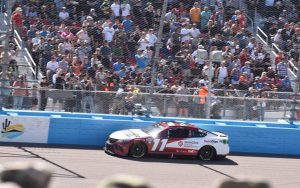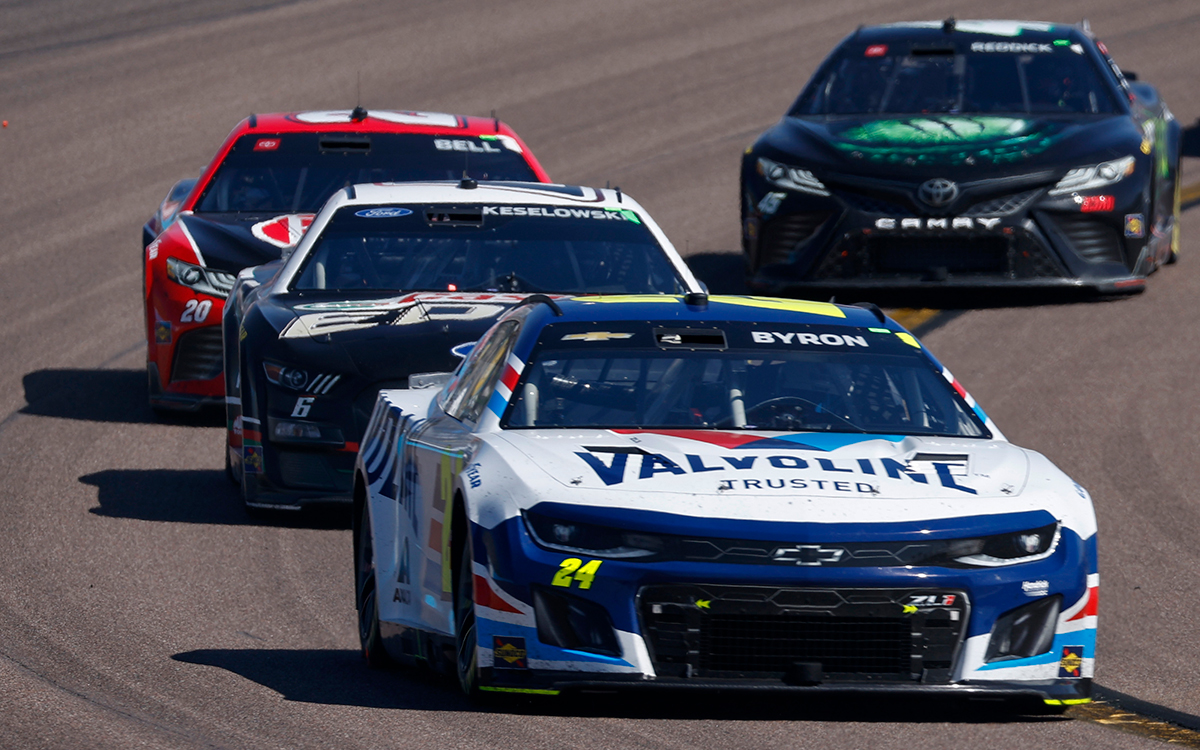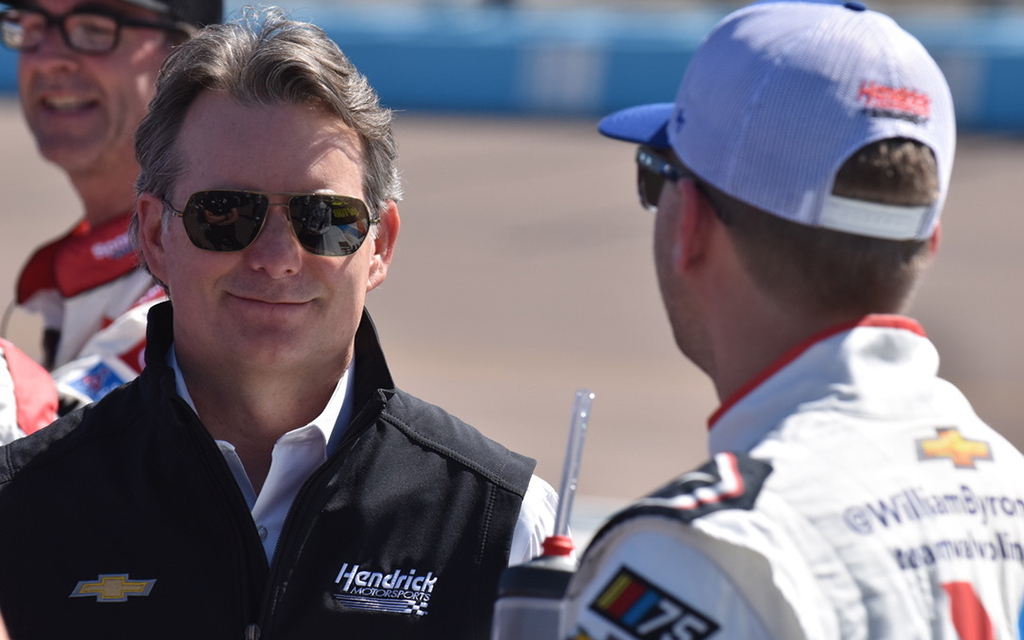PHOENIX – Kyle Busch wanted to turn Phoenix Raceway into Royal Rumble on a Sunday afternoon in March, and the former NASCAR Cup Series champion let it be known days after Denny Hamlin intentionally wrecked rival Ross Chastain at Phoenix Raceway.
“When it comes to the time in which it starts affecting other people’s races and such, then again, I think it leaves the door open for you to go punch somebody in the face,” Busch said after the collision affected him and other drivers during the 317-mile NASCAR Cup Series race.
On NASCAR’s end, the fallout has caused quite the ripple effect with no clear end in sight. NASCAR not only punished Hamlin for his on-track theatrics but levied the largest combined team penalty in the sport’s history to the four Hendrick Motorsports teams, while Justin Haley and the No. 31 Kaulig Racing team also received the same punishment.
The drama had only just begun.
All parties penalized decided to appeal. Before the decision to appeal, Hamlin channeled his inner-Marshawn Lynch in his next media availability the week after Phoenix in Atlanta.
“I think you should get your Shingrix shingles vaccination, is what I think,” Hamlin said in a tone that suggested he only answered questions to meet his media obligation and avoid further discipline. He repeatedly shouted out the Shingrix sponsor on his hat before saying, “I have nothing to say.”
Once the dust settled and the appeals were heard, the National Motorsports Appeals Panel created a bigger problem for NASCAR.

23XI Racing’s Denny Hamlin wrote another chapter of his rivalry with Ross Chastain when he intentionally wrecked rival Ross Chastain at Phoenix Raceway in March. (Photo by Joe Eigo/Cronkite News)
Hamlin’s penalty was upheld, with the decision raising questions of its own. Bigger questions were raised when the appeals panel reversed the penalties against Hendrick Motorsports while upholding Haley’s. As anticipated, the decision did not sit well with many in the sport and was reversed to drop Haley’s points penalty on second appeal.
“From the outside looking in, (it) looks like the same two penalties and you have one that’s undone from a points standpoint and one that stays the same,” Stewart-Haas Racing driver Kevin Harvick said. “It leads to a lot of questions. I think when you start adding rules to the process, I think it adds more questions in my opinion.”
Harvick admitted at the time he didn’t have all the facts, but the inconsistency of the enforcement was clear as day. NASCAR knew this but doesn’t govern the appeals panel, which changes with each case. The problem came when the panel admitted both Hendrick and Kaulig violated the rules but didn’t enforce the rule for Hendrick.
The following week, once the appeals were complete, NASCAR went on the offensive, “randomly” selecting the cars of Alex Bowman and William Byron to be further inspected at NASCAR’s research and development center after April’s race at Richmond Raceway.
The two Hendrick drivers were penalized 60 points and five playoff points, while the interim crew chiefs were suspended for two races and fined $75,000. The move appeared to be an attempt to regain credibility in the garage after the self-inflicted damage.
NASCAR routinely selects cars to go to the R&D center, but the optics just days after the appeal fallout were clear.
“It’s not random anymore,” Bob Pockrass of Fox Sports said. “NASCAR now admits its series director discretion. I think NASCAR should just come out and say, ‘Look, these teams were penalized earlier this year and it’s our obligation to make sure they’re following the rules so … they’re going to get extra scrutiny.’ I don’t think anybody would really have a huge problem with that. Maybe some people would say, ‘Well now you’re just targeting Hendrick,’ but they’ve given them a reason in some ways to target them, they’ve been found guilty of penalties this year. Even the appeals said that they violated the rules.”





